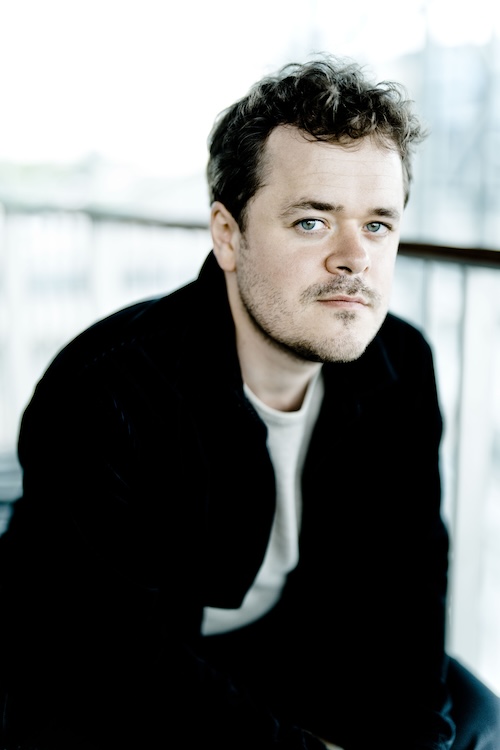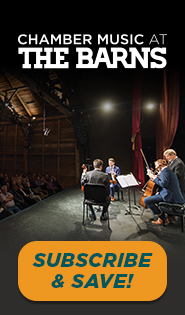Performances
Shaham helps Wolf Trap celebrate a barn tricentenary with well-balanced program
Three hundred years ago, a German immigrant built a barn for […]
Concert Opera puts the Greek tragedy back into opera with Gluck’s “Iphigénie”
Washington Concert Opera opened its three-opera season with another admirable rarity, […]
Les Arts Florissants, violinist de Swarte deconstruct Vivaldi’s “Four Seasons” at Library of Congress
The resolution to the budget standoff in the U.S. Senate two […]
Gardner returns to NSO, with searing Britten and Lutosławski
Edward Gardner’s visits with the National Symphony Orchestra always reward the […]
Virtues of the viola spotlighted in Chamber Music Society program
Five musicians from the Chamber Music Society of Lincoln Center presented […]
Articles
Patrick Quigley to open new Opera Lafayette era with a fresh look at “Dido and Aeneas”
At the end of Opera Lafayette’s 30th season last May, founder […]
Critic’s Choice
Lawrence Brownlee, Erin Morley, and Gerald Martin Moore. Vocal Arts DC. […]
Concert review
Grosvenor scales the heights with a trio of blockbusters for Chamber Music Maryland

Benjamin Grosvenor performed a recital for Chamber Music Maryland Sunday in Columbia. Photo: Marco Borggreve
Chamber Music Maryland brought Benjamin Grosvenor back to the Horowitz Center in Columbia on Sunday afternoon. For his first visit since 2018, the English pianist performed Chopin’s Piano Sonata No. 2, Ravel’s Gaspard de la nuit, and Mussorgsky’s Pictures at an Exhibition. Any one of these finger-busting works would have sufficed to show impressive technical acumen, let alone all three.
Yet this was no mere demonstration of virtuosic showmanship. Juxtaposing the three pieces in a single concert revealed themes that drew them all together. Grosvenor approached each piece with subtle musical shading and, where needed, crushing force and volume. In the Chopin sonata’s first movement, the barbed first theme stood in contrast with the pearly, moonlit secondary theme.
Grosvenor took the repeat of the exposition, often omitted, giving a chance to savor that unsettled primary theme. The development section of this movement surprised with the generous rubato Grosvenor applied, as the characteristics of the two themes played out against each other.
The Scherzo, which has no tempo marking, moved moderately enough that the dizzying parallel chords and repeated notes sounded with utter clarity. Delicate moments abounded in the Trio section, also with the optional repeat observed. Although the third movement (“Marche funèbre”) opened softly, as if subsumed in grief, explosive outbursts followed, in this celebrated piece that Chopin composed two years before the rest of the sonata and that became its heart.
The Finale, one of the oddest movements Chopin penned, is a blur of notes in octaves between the two hands moving in lockstep. Grosvenor played it with surprising clarity, using the soft pedal and other techniques to make this enigmatic stream of sound as expressive as possible.
Grosvenor played Gaspard de la nuit on his 2012 Washington debut, presented by Washington Performing Arts. Returning to it this time, in conjunction with the 150th anniversary of Ravel’s birth, showcased the maturing of both his technique and musicality. In “Ondine,” the watery arpeggiation in the right hand sounded with glassy clarity. The serene melody hovered effortlessly, woven through many complex hand crossings.
The clanging death knell in “Le gibet,” a B-flat ostinato running through the whole movement, hearkened back to the key of Chopin’s funeral march, a connection pointed out by Grosvenor programming the pieces back to back. The musical lament with which Ravel surrounded that ringing bell surged and receded poignantly.
“Scarbo” proved a sort of musical horror show, with obsessive starts and stops like jump scares. Played with a diabolical air of unpredictability, the piece careened wildly from extreme to extreme, with no hint of technical weakness or error, a true tour de force.
Ravel, of course, made a celebrated orchestration of Pictures at an Exhibition, which may have inspired Grosvenor’s orchestral realization of the piano original. After a trumpet-like opening statement of the Promenade theme, Grosvenor’s uncanny take on the “Gnomus” movement, again full of grotesque sudden surges, made another surprising connection to Ravel’s “Scarbo.”
Grosvenor gave a meditative sheen to the “Old Castle” movement, whose main melody Ravel gave to the alto saxophone, echoed in Grosvenor’s mellow but full phrasing of the tune. A playful “Tuileries” set the stage for the detached rumbling of the “Bydlo” movement, given a crunchy solidity through largely eschewing the sustaining pedal. The “Ballet of the Chicks,” taken at a madcap pace, delighted with antic trills and grace notes.
The chatterboxes of “The Market in Limoges” came across in the heavy-handed tone applied by Grosvenor, contrasted with the solemn intonation of “In the Catacombs.” That piece melted into an eerie rendition of “Con mortuis in linguis mortuis,” where the minor-mode version of the Promenade theme appears to return the listener to the land of the living. The last two movements, “The Hut of Baba Yaga” and “The Great Gate of Kiev,” revealed the full extent of Grosvenor’s power, with no flagging in intensity throughout this intense program.
An enthusiastic audience would not let Grosvenor leave the hall without three encores. More aquatic Ravel came in the form of “Jeux d’eau,” which shimmered with translucent iridescence. Sealing the image of an invulnerable technique was the “Precipitato” closing movement from Prokofiev’s Piano Sonata No. 7, played with heart-stopping violence. The final selection, Alexander Siloti’s pensive B minor arrangement of Bach’s Prelude in E Minor, from Book I of The Well-Tempered Clavier, calmed the nerves with melancholy beauty.
The Parker Quartet performs Beethoven’s String Quartet No. 11 (“Serioso”), Webern’s Five Movements for String Quartet, and Schubert’s String Quartet No. 15, 7:30 p.m. January 24 at the Horowitz Center in Columbia. chambermusicmaryland.org
Calendar
December 11
Classical Arts Society of Washington
Christopher Schmitt, pianist
6:30 […]
News
Washington Classical Review wants you!
Washington Classical Review is looking for concert reviewers in the DC […]
Vienna Philharmonic to visit Kennedy Center
After raising an all-time-record $3.45 million at its first NSO Gala, […]

